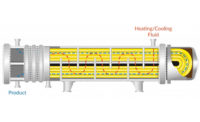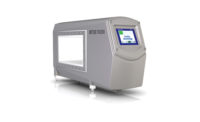The search for new alternatives for pasteurizing and processing milk has led food scientists and technologists to use preservation and processing factors other than heat to ensure microbiological safety and to preserve the quality characteristics of the food.
Generally during commercial production of milk products such as cream, yogurt and butter, the milk is subjected to high temperatures for a set period of time so as to render it microbiologically safe. In spite of being a very efficient process to inactivate pathogenic microorganisms, it may also result in flavor modification, color change and loss of nutrients. And a study1 indicated that at high-temperature short-time pasteurization, 72 degrees Celsius for 15 seconds, Listeria monocytogenes can survive; that is the FDA’s requirement to pasteurize milk. High temperature also adversely affects the texture due to the formation of new toxic substances that are formed as a result of temperature-catalyzed reactions or modification of the existing macro molecules (https://tinyurl.com/yckzveem). Other changes that might occur in milk as a result of exposure to high temperatures are protein denaturation, loss of some vitamins such as vitamin B and non-enzymatic browning. Additionally, the equipment for pasteurization is somewhat complicated; if proper cleaning is not practiced, it could lead to the spoilage of milk.
Nowadays, with increased consumer demand for fresh nutritious foods with minimum processing, food professionals are evolving and designing alternative technologies to produce more nutritious and safe foods. In this context, the use of ultrasound seems to be a promising technology.
Mechanism of action
Ultrasound consists of sound waves with a frequency higher than 20 kilohertz. These waves do not cause appreciable changes in the nutritional composition of dairy products. When power ultrasound is introduced to a liquid medium, the sound waves propagate in alternate compression and rarefaction pressure regions and create cavitation. Cavitation is the process whereby micro bubbles or cavities filled with vapors are formed.
Ultrasound causes tiny bubbles to expand and contract thousands of times every second, to the point where the bubble collapses. At the time of cavitation, the temperature inside the bubble reaches 5,000 degrees Kelvin and 2,000 bar pressure. High temperature and pressure cause inactivation of microorganisms. The lethal effect on bacteria can be attributed to destruction of the cytoplasmic membrane or the formation of free radicals.
Thermosonication
The use of ultrasound alone does not produce the required results. However, if ultrasound is coupled with heat or pressure, the desired results can be attained.
Thermosonication is a process that involves the usage of low heat in addition to ultrasound waves. It is a novel and viable technique that can inactivate the pathogenic microorganisms. It also increases the shelf life of the product, making it safe for human consumption without altering its nutritional composition and organoleptic attributes. It was revealed that continuous-flow ultrasonic treatment could be a promising technique for milk processing. This method has several advantages, including homogenization of milk and less energy consumption than batch systems.2
Another study3 explored the effects of thermosonication on the inactivation of Geobacillus stearothermophilus in concentrated skim milk as a function of total solids content, temperature and time and investigated changes in the solubility of the skim milk. The results showed that thermosonication had an increased bactericidal effect on both vegetative cells and spores as compared to heat treatment alone without affecting solubility.
Yet another study4 evaluated the effects of combined heat and ultrasound on the activity of Staphylococcus aureus protease and total plasmin, as well as the impact on sensory properties of milk and cream. It was observed that sonication at 133 micrometers (peak to peak) for 2.5 minutes decreased the enzyme activity by approximately 72% in pasteurized skim and whole milk and by 92% in commercial pasteurized reduced-fat milk. It was also noted that the viscosity of commercial pasteurized milk samples that were thermosonicated at 133 micrometers (peak to peak) for 2.5 minutes was not affected.
It was also reported that yogurt cultures prepared from milk subjected to thermosonication had higher gelation pH values, increased viscosity and higher water-holding capacities than the preheated (90 degree Celsius, 10 minutes) milk. Moreover, the yogurt exhibited a honeycomb-like network and exhibited a porous structure.5
A separate study6 also reported that the processing of milk with thermosonication treatment significantly increased viscosity while decreasing serum separation values of yogurt drinks in comparison to conventional heat treatment.
Promising future
Thermophilic bacteria and spores that can survive pasteurization temperature can be easily inactivated with the help of thermosonication. Thermosonication is a promising pretreatment method for shelf-life extension as an adjunct to pasteurization. However, more studies are needed to understand the commercial feasibility of the process.
References
1. Doyle, M.P., Glass, K.A., Beery, J.T., Garcia, G.A., Pollard, D.J. (1987). “Survival of Listeria monocytogenes in milk during high-temperature, short-time pasteurization.” Applied and Environmental Microbiology 53: 1433-1438.
2. Vilamiel, M. and Jong, P. (2000). “Inactivation of Pseudomonas fluorescens and Streptococcus thermophiles in Trypticase® Soy Broth and total bacteria in milk by continuous-flow ultrasonic treatment and conventional heating.” Journal of Food Engineering 45: 171-179.
3. Beaty, N.F. and Walsh, M.K. (2016). “Influence of Thermosonication on Geobacillus stearothermophilus inactivation in Skim Milk.” International Dairy Journal 61: 10-17.
4. Vijayakumar, S. (2012). “Effects of thermosonication on proteases and characteristics of milk and cream.” Thesis. Iowa State University.
5. Riener, J., Noci, F., Cronin, D.A., Morgan, D.J., Lyng, J.G. (2009). “The effect of thermosonication of milk on selected physicochemical and microstructural properties of yoghurt gels during fermentation.” Food Chemistry 114: 905-911.
6. Anaya-Esparza. L.M., Velázquez-Estrada, R.M., Roig, A.X., García-Galindo, H.S., Sayago-Ayerdi, S.G. Montalvo-González, E. 2017. “Thermosonication: An alternative processing for fruit and vegetable juices.” Trends in Food Science & Technology 61: 26-37.



